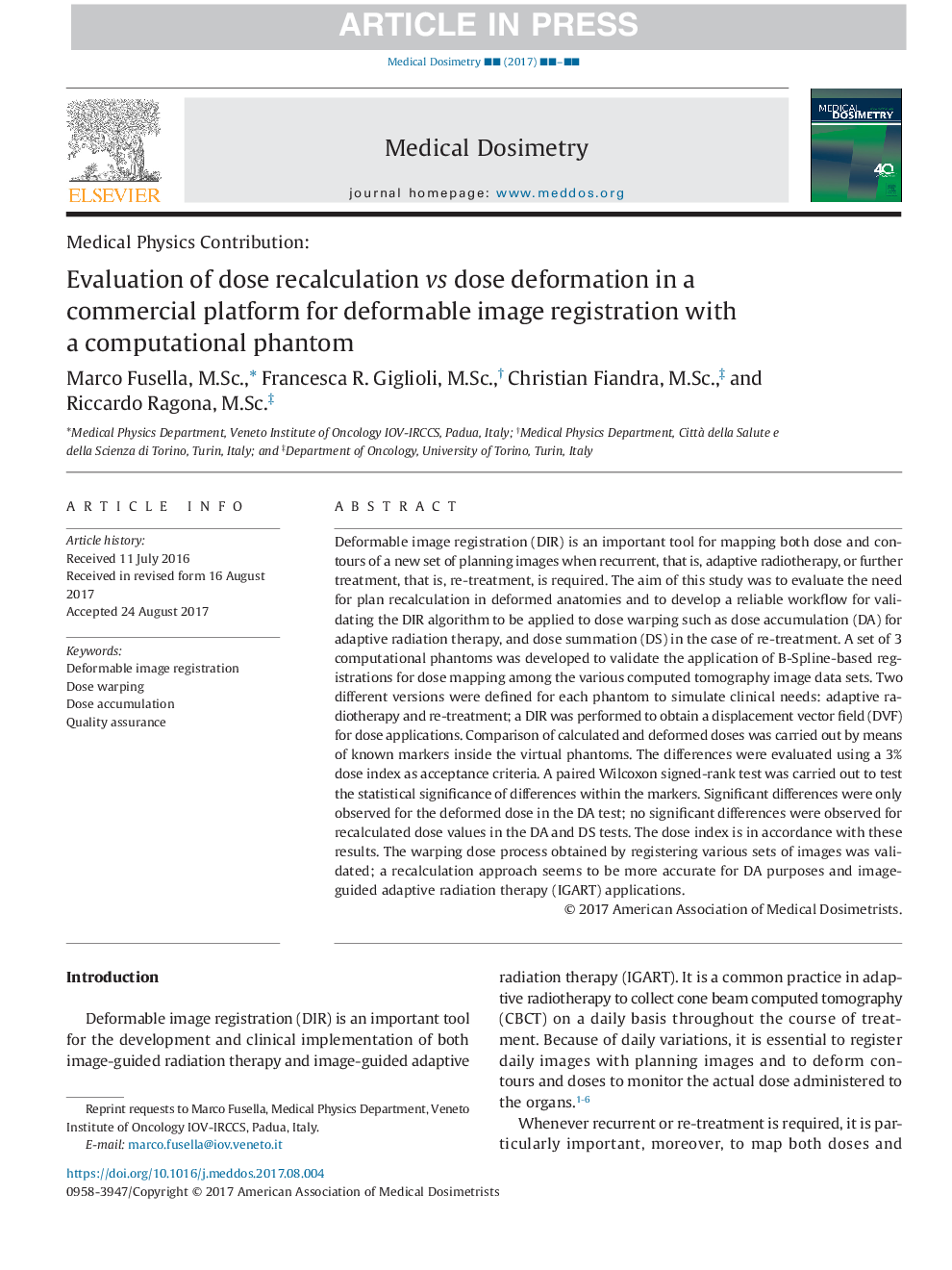| Article ID | Journal | Published Year | Pages | File Type |
|---|---|---|---|---|
| 8248297 | Medical Dosimetry | 2018 | 9 Pages |
Abstract
Deformable image registration (DIR) is an important tool for mapping both dose and contours of a new set of planning images when recurrent, that is, adaptive radiotherapy, or further treatment, that is, re-treatment, is required. The aim of this study was to evaluate the need for plan recalculation in deformed anatomies and to develop a reliable workflow for validating the DIR algorithm to be applied to dose warping such as dose accumulation (DA) for adaptive radiation therapy, and dose summation (DS) in the case of re-treatment. A set of 3 computational phantoms was developed to validate the application of B-Spline-based registrations for dose mapping among the various computed tomography image data sets. Two different versions were defined for each phantom to simulate clinical needs: adaptive radiotherapy and re-treatment; a DIR was performed to obtain a displacement vector field (DVF) for dose applications. Comparison of calculated and deformed doses was carried out by means of known markers inside the virtual phantoms. The differences were evaluated using a 3% dose index as acceptance criteria. A paired Wilcoxon signed-rank test was carried out to test the statistical significance of differences within the markers. Significant differences were only observed for the deformed dose in the DA test; no significant differences were observed for recalculated dose values in the DA and DS tests. The dose index is in accordance with these results. The warping dose process obtained by registering various sets of images was validated; a recalculation approach seems to be more accurate for DA purposes and image-guided adaptive radiation therapy (IGART) applications.
Related Topics
Physical Sciences and Engineering
Physics and Astronomy
Radiation
Authors
Marco M.Sc., Francesca R. M.Sc., Christian M.Sc., Riccardo M.Sc.,
